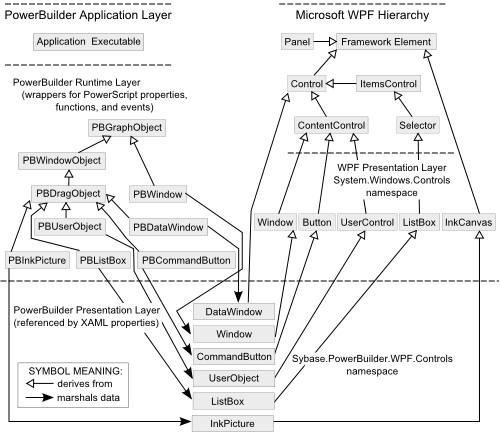The runtime classes in a PowerBuilder .NET application maintain the traditional PowerBuilder control hierarchy, but inherit from the Microsoft WPF control hierarchy.
When the runtime engine loads the application, the PowerBuilder .NET control classes (that are actually .NET wrappers around standard PowerScript controls) marshal data and connect to PowerBuilder versions of WPF controls in the presentation layer.
The following diagram shows the dual-dependency structure of controls in the PowerBuilder presentation layer. However, for simplicity, only a minimal set of control classes is shown in the diagram.

The PowerBuilder .NET controls internally use a "PB" prefix. This set of controls enables you to use PowerScript code to access control properties, methods, and events that marshal the data and pass it to the PowerBuilder version of WPF controls in the presentation layer.
The controls that you add to window objects in the PowerBuilder WPF Window painter, and that appear in the runtime presentation layer, are derived from control classes in the WPF Framework (System.Windows.Controls namespace). They are referenced at design time in XAML using the default pbwpf alias for the Sybase.PowerBuilder.WPF.Controls namespace, and at runtime, in binary application markup language (BAML).